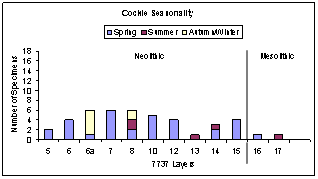

Figure 15: Seasonality of gathering as indicated by the cockle shells from columns 7737 and 7738 at Krabbesholm
Although the seasonality of oysters has been much discussed in archaeological literature (Rowley-Conwy 1984; Milner 2002; Bailey and Milner in press) cockle seasonality has not been accorded the same amount of attention, although studies have been taking place for quite some time (Craig and Hallam 1963; Deith 1983; Brock and Bourget 1989). Oyster seasonality research has been undertaken at both Krabbesholm and Norsminde by Nicky Milner (2002; Milner and Laurie in press) and has been compared with the cockle seasonality at those two sites (see Figure 15, Figure 16, Figure 17 and Figure 18).
This research has shown that the growth patterns of the cockle make it possible to ascertain season of cockle death for three broad periods of the year only (spring, summer and autumn/winter). In addition, the results presented below can only be taken as a broad guide, ideally a larger sample size should be used. However despite these limitations the following results have been obtained.


Figure 15: Seasonality of gathering as indicated by the cockle shells from columns 7737 and 7738 at Krabbesholm

Figure 16: Seasonality of gathering as indicated by the oyster shells from Krabbesholm column 7737 (Milner pers.comm.)
There are not enough data available to produce a clear picture of cockle seasonality in the Mesolithic at Krabbesholm. In the Neolithic, spring collecting takes place in all but one layer with summer and autumn/winter collecting being an occasional occurrence. This contrasts with the seasonality data from the oysters where collecting appears to occur mainly in the colder months of the year, that is autumn/winter and winter/spring. Some spring gathering takes place in all layers but summer gathering appears to occur infrequently.
In contrast, the season of collection varies only slightly between the cockles and the oysters at Norsminde, with spring collection dominating most of the Mesolithic layers and summer collection becoming more predominant in the Neolithic layers.

Figure 17: Seasonality of gathering as indicated by the cockle shells from Norsminde

Figure 18: Seasonality of gathering as indicated by the oyster shells from Norsminde (Milner 2002)
Season of gathering at the Norsminde site would suggest that shellfish were used as a seasonal resource. The data from Krabbesholm present a more complex picture, with cockles appearing to be a more seasonally utilised resource than oysters, which appear to have been collected year round.
© Internet Archaeology URL: http://intarch.ac.uk/journal/issue22/5/quest3.html
Last updated: Tues Oct 2 2007